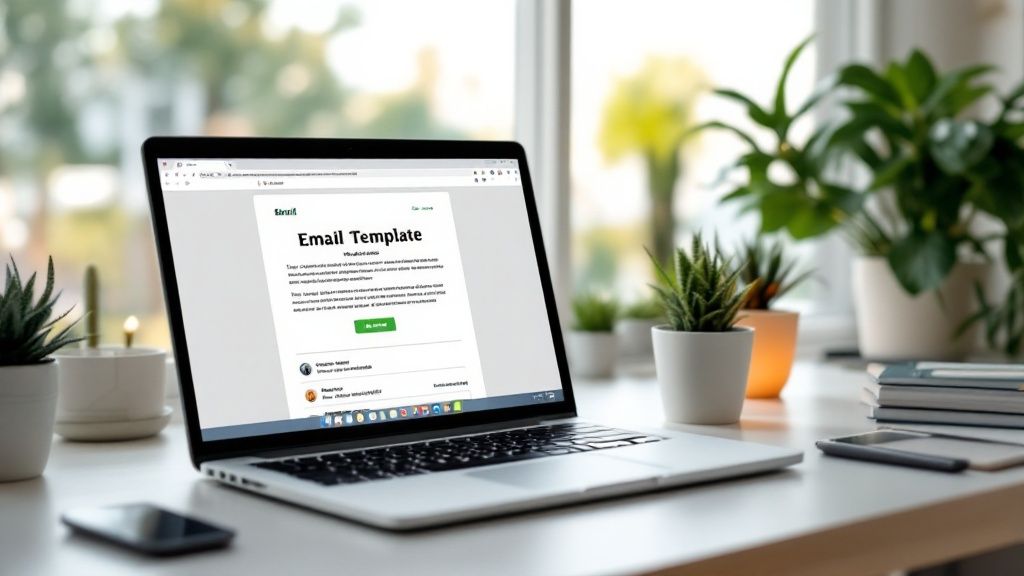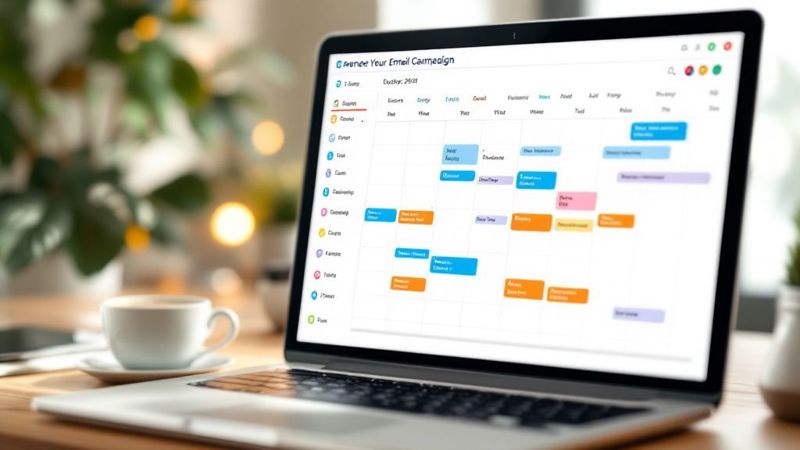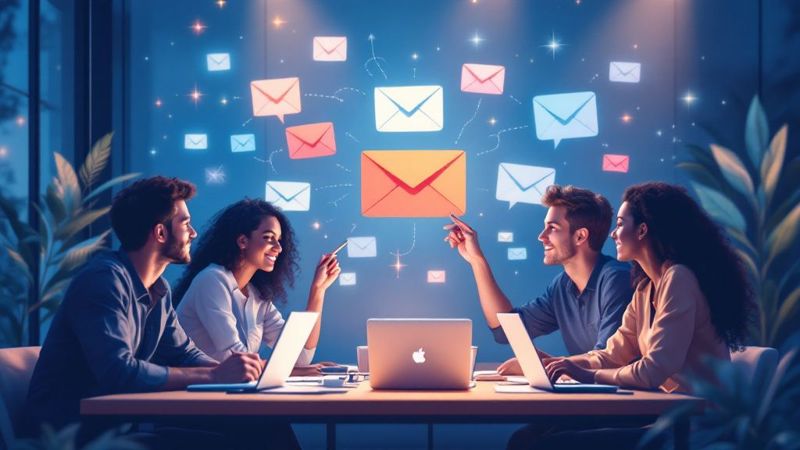Understanding the Power of Personalized Email Marketing
Think of email marketing like having a conversation with each person on your list. When you speak to someone directly about their interests and needs, they're far more likely to listen and engage. That's exactly what personalized email marketing does - it creates individual experiences that connect with each subscriber in meaningful ways.
Why Personalization Matters
Generic email blasts are like shouting into a crowd - most people tune out because the message isn't meant specifically for them. When every subscriber gets identical content regardless of their preferences or behaviors, engagement suffers. The numbers tell the story - basic email blasts typically see lower open rates, fewer clicks, and more unsubscribes.
The magic happens when you treat each subscriber as an individual. By using data about their preferences and past interactions, you can craft messages that feel personal and relevant. For example, if someone regularly buys running shoes from your store, sending them updates about the latest running gear makes perfect sense.
The impact of personalization is clear in the numbers. Research shows that personalized emails achieve an 18.8% open rate compared to just 13.1% for generic messages. Even more impressive, personalized emails see a 29% higher unique open rate and 41% higher unique click rates than their non-personalized counterparts. See more data here: Learn more about email personalization statistics. These improved engagement rates lead directly to better conversion rates and sales.
Benefits of Personalized Email Marketing
When you make email marketing personal, the benefits go far beyond just better open rates. Here's what personalization can do for your business:
- Strengthen Customer Relationships: When customers feel understood and valued, they're more likely to stick around and engage with your brand
- Increase Conversions: Showing people products and offers that match their interests naturally leads to more sales
- Improve Customer Lifetime Value: Engaged customers tend to buy more often and become brand advocates
- Boost ROI: Targeted, personal campaigns typically generate better returns than generic email blasts
By focusing on creating real connections through personalized emails, you can turn your marketing from forgettable mass messages into meaningful conversations that drive real business results. The key is using your customer data thoughtfully to deliver content that truly matters to each person on your list.
The Business Case for Personalized Email Marketing

Email personalization has moved beyond being just a trend - it's now essential for businesses looking to build real connections with customers and grow their revenue. The data shows that personalized emails consistently deliver strong returns on investment. Let's explore how companies are using smart personalization to achieve meaningful business results.
Driving Revenue Growth Through Personalization
When businesses can speak directly to specific customer segments with relevant messages, their conversion rates improve significantly. For instance, an online fashion retailer might send emails featuring new arrivals based on each customer's previous purchases and browsing patterns. This targeted approach naturally leads to more sales compared to generic mass emails. The numbers prove it works - customers are far more likely to buy when they receive personalized product recommendations.
Increasing Customer Lifetime Value
Building lasting customer relationships requires consistent, meaningful communication. When customers receive emails that align with their interests and needs, they're more likely to stay engaged with your brand over time. This ongoing engagement translates into more frequent purchases and higher customer lifetime value. You might find it helpful to read more about this in our guide on How to master B2B email marketing personalization.
Improving Marketing Efficiency
While setting up personalized email campaigns requires some upfront investment, it pays off through better marketing performance. By sending the right message to the right person at the right time, companies can reduce wasted spending and get better results from their campaigns. The impact is clear: 60% of consumers have bought something after getting a marketing email, and email marketing influences $87.5 billion in sales according to recent statistics. Even more impressive, email marketing leads customers to spend 138% more than those who don't receive email offers.
The Hidden Costs of Poor Personalization
Skipping personalization comes with real risks. Generic emails often get filtered as spam or ignored completely by recipients. This wastes your marketing budget and can damage how customers view your brand. When people get too many irrelevant emails, they're likely to unsubscribe - cutting off a valuable channel for future sales and engagement. Taking the time to implement proper personalization helps avoid these costly mistakes.
Essential Elements of Effective Email Personalization
Email personalization goes far beyond adding someone's name to a message. The most successful email campaigns combine several key elements to create meaningful, relevant experiences for subscribers. Let's look at what makes personalized emails truly connect with readers.
Data Collection and Segmentation
Good personalization starts with understanding your audience through data. This means tracking meaningful information like what subscribers buy, which emails they open, and how they interact with your content. For instance, if you run an online bookstore, you might notice that certain customers consistently purchase mystery novels while others prefer cookbooks. By organizing subscribers into groups based on these patterns (segmentation), you can send messages that speak directly to their interests.
Dynamic Content Creation
Once you know your audience segments, the next step is crafting content that resonates with each group. A bookstore might send their mystery fans an email featuring new thriller releases, while cookbook enthusiasts receive updates about upcoming cooking guides. Tools like OKZest help take this personalization further by creating custom images for different subscriber groups, making emails more visually engaging.
Advanced Personalization Techniques
The most effective email campaigns use sophisticated approaches to connect with readers. Behavioral targeting looks at how people interact with your website and emails to determine what content they'll find most interesting. Predictive analytics helps forecast what products or content someone might want based on their past choices. Contextual personalization considers factors like a subscriber's location or time zone to deliver perfectly timed, relevant messages. For example, a travel company could recommend nearby weekend getaways based on where their subscribers live.
Maintaining Privacy and Building Trust
While data powers personalization, protecting subscriber privacy is essential. Be clear about how you collect and use information. Make it easy for people to control their preferences with straightforward opt-in and opt-out options. Follow all relevant privacy regulations carefully. The goal is to make emails feel helpful and personal without crossing into uncomfortable territory. Regular testing and subscriber feedback can help you find the right balance between personalization and privacy.
Building Your Personalization Strategy

A strong personalized email marketing program starts with careful planning. This section will help you evaluate your current capabilities, identify what you need to succeed, and map out a practical timeline for implementation that matches your goals and resources.
Assessing Your Current Capabilities
Start by taking an honest look at your existing email marketing practices. Consider these key areas:
- What customer data are you gathering? Look at your collection of demographics, purchase records, website activity, and email engagement metrics
- How do you currently divide your subscriber list? Review your existing segments and grouping criteria
- What personalization elements are you using now? This could range from basic name insertion to content customization
- Which email tools and systems do you have? Check if your current platforms can handle more advanced personalization
Taking stock of where you stand helps identify gaps and opportunities so you can focus your improvement efforts where they matter most.
Identifying Resource Needs
To do personalization well, you need the right mix of tools, talent and infrastructure. Key considerations include:
- Data Systems: Having reliable ways to collect, organize and analyze customer information
- Technology Platform: Ensuring your email system supports features like dynamic content and behavior-based targeting. OKZest can help by creating unique personalized images for each subscriber
- Team Skills: Having people who understand data analysis, email marketing strategy, and content creation. See our guide on using customer data effectively
- Available Budget: Planning what you can invest in new tools, training, and other personalization needs
Creating a Realistic Implementation Timeline
Taking a step-by-step approach often works best. Here's a suggested progression:
- Phase 1: Start with the basics - using subscriber names and simple list segments based on demographics
- Phase 2: Add dynamic content that changes based on past purchases or website activity
- Phase 3: Move into more complex approaches like behavior-triggered emails and predictive content
Build in time to test and refine your approach at each stage. Watch for common hurdles like disconnected data sources or team coordination issues, and plan how you'll handle them. Keep stakeholders informed throughout to maintain support and momentum.
Advanced Personalization Techniques and Tools

Email personalization has evolved far beyond just adding a customer's name to messages. Modern techniques allow you to create deeply customized experiences based on individual behaviors, preferences and needs. Let's explore how you can take your email personalization to the next level using advanced methods and tools.
AI and Machine Learning in Email Personalization
Artificial intelligence and machine learning help businesses send more relevant emails at exactly the right time. These technologies analyze customer data to spot patterns and predict what subscribers want to see next. For example, AI can figure out when each person is most likely to open emails, while machine learning suggests products based on what they've bought before. The result? Higher open rates, more clicks, and better conversions.
Leveraging Customer Data Effectively
Good personalization starts with smart data practices. While gathering detailed customer insights is important, you need to handle this information carefully and openly. Break your audience into segments based on what they buy, how they browse your site, and who they are. Be clear about how you collect and use data, and give subscribers easy ways to control their preferences. This builds the trust needed for long-term customer relationships.
Predictive Personalization and Customer Engagement
Predictive personalization helps you stay one step ahead of customer needs. Instead of just reacting to past behavior, you can anticipate what subscribers want next. Take a coffee retailer for example - if someone regularly buys beans, sending them a well-timed email about coffee grinders makes perfect sense. This kind of smart prediction makes your emails feel helpful rather than pushy.
Tools for Advanced Email Personalization
Several key tools can help put these advanced techniques into practice. Here's what to look for:
| Feature | Benefit |
|---|---|
| Dynamic Content | Show different content to different subscribers automatically |
| A/B Testing | Test different versions to see what works best |
| AI-Powered Recommendations | Let AI suggest products based on customer behavior |
| Personalized Image Generation | Create custom images for each subscriber using tools like OKZest |
Pick tools that match your needs and budget. For example, OKZest helps create unique personalized images that make emails more visually engaging. Start small, test different approaches, and build on what works. Remember - good personalization makes emails feel less like marketing and more like helpful suggestions from a trusted friend.
Measuring Success and Optimizing Performance

Getting real results from personalized email marketing requires looking beyond basic metrics and diving deep into your data. By focusing on meaningful measurements and making continuous improvements, you can understand what truly connects with your audience and prove the value of your efforts.
Key Metrics for Personalized Email Marketing
While many marketers focus on open rates, they only tell part of the story. Click-through rates (CTRs) offer better insight into how engaging your content is by showing the percentage of readers who clicked your links. Even more important are conversion rates - the number of recipients who completed desired actions like making purchases or registering for events. For a detailed guide on tracking performance, check out How to master email marketing KPIs.
To connect your email campaigns directly to business outcomes, track revenue per email. This helps quantify the financial impact of your personalization efforts. Don't forget to monitor customer lifetime value (CLTV) too - when you build stronger relationships through personalized emails, customers tend to stick around longer and spend more.
Advanced Testing Methodologies
Simple A/B testing helps you compare two email versions, but multivariate testing takes it further. You can test several elements at once - like different subject lines, images, and buttons - to find the perfect mix for each customer segment. Think of it as running mini-experiments to discover what works best.
For instance, you might test various personalized images created with OKZest alongside different subject lines to see which combination gets the best response from specific groups of customers. These detailed tests reveal valuable patterns in customer preferences.
Reporting and Continuous Improvement
Keep your team and stakeholders in the loop by sharing regular reports that highlight how personalization affects key business metrics. Clear, focused reporting helps build support for your personalization strategy and secure resources for future efforts.
Remember that improving personalization is an ongoing process. Stay focused on analyzing results, trying new approaches, and adjusting your tactics based on what the data shows. This commitment to regular fine-tuning helps you get the most from your personalized email campaigns.
Ready to elevate your email marketing with personalized images?
OKZest makes it simple to create unique images for each subscriber automatically, helping you boost engagement and drive more conversions. Visit OKZest today to learn more and start your free trial.